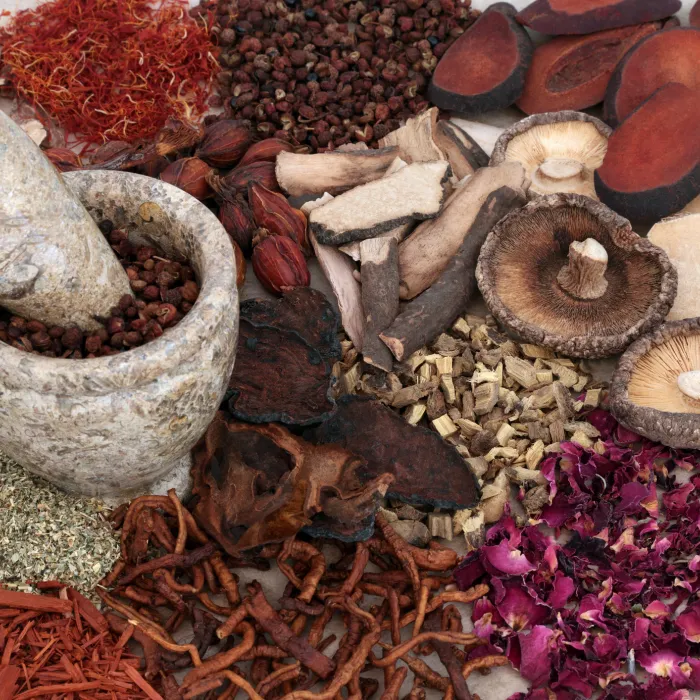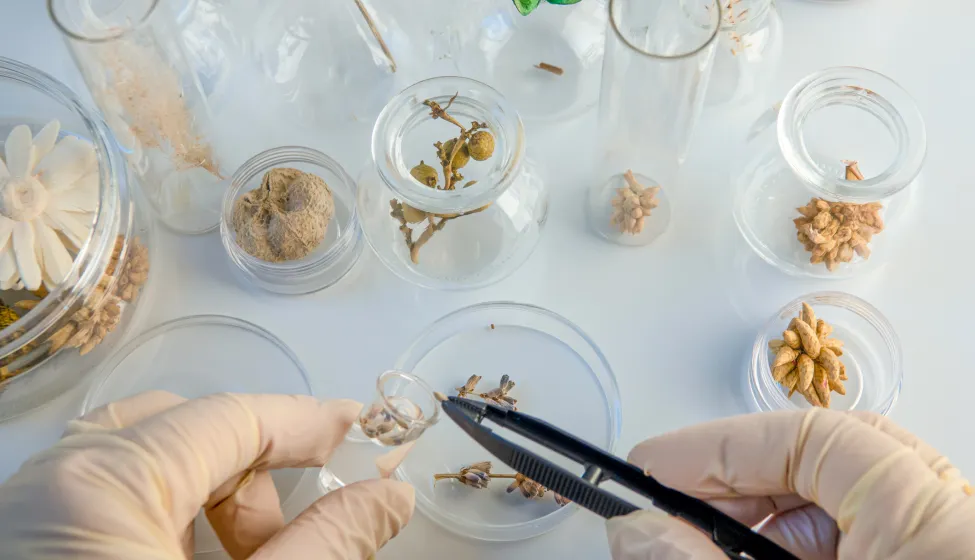October 3, 2025
Reducing neuroinflammation caused by overstimulation of microglia, the brain's resident immune defenders, has sparked growing interest as a therapeutic strategy for treating Alzheimer's disease (AD). Many natural extracts found in traditional herbal compounds exhibit significant capacity to improve immune response and reduce inflammation. However, like most medicines, targeted treatments have to overcome the blood-brain barrier (BBB) that impedes the efficiency of drug delivery.
A study by Exponent's Jason Lu and a team of university researchers in China explains how they found a way through. They developed transferrin-modified hybrid extracellular vesicles (Tf-hEVs) that could deliver berberine (Ber) and palmatine (Pal) directly to microglia in the brain to treat AD. These vesicles successfully crossed the blood-brain barrier, effectively reducing amyloid β plaques, easing neuroinflammation, and improving cognition in AD-affected mice. The study is now available in the Journal of Nanobiotechnology.
Delivery method
Researchers combined natural cell vesicles (exosomes) with lab-made, transferrin-modified liposomes to deliver two traditional herbal compounds (Ber and Pal) together. The transferrin coating lets the hybrid vesicles move through the blood-brain barrier and head straight for the immune cells (microglia) in the brain of the mouse. The vesicles deployed in this nanosystem are very small (about 150-180 nanometers), hold a large amount of both drugs, and release them slowly and evenly, with sustained presence for up to 24 hours.
Lab results
After researchers used lipopolysaccharide (LPS) to inflame the microglia, the treatment (Tf-hEVs-Ber/Pal) suppressed harmful NF-κB/MAPK inflammatory signals, reduced Aβ plaques (Aβ40/42), preserved neurons (↑NeuN), and pushed the microglia toward an anti-inflammatory mode (called M2). The therapy helped restore cognition, spatial learning, and memory, as demonstrated through Morris Water Maze (MWM) and Novel Object Recognition (NOR) tests. Moreover, this nanosystem was shown to be more effective than using free drugs or single-drug carriers.
Broader potential
Beyond treating AD, this treatment shows compatibility with other current therapies. It addresses neuroinflammation not addressed by current Alzheimer's drugs, like Aβ antibodies or neurotransmitter modulators, and it could be even more effective when combined with those drugs. Hybridization helps overcome exosome-only limits so this system can carry more of a drug and be made more reliably while maintaining the ability to home in on brain cells effectively. The researchers suggested this strategy may also translate to other neurodegenerative diseases, such as Parkinson's disease and amyotrophic lateral sclerosis (ALS, also known as Lou Gehrig's disease) where microglial overactivation contributes to neuronal loss. The efficacy of this study also shows further potential for the application of Chinese herbal ingredients in such therapies.

"Microglia-targeting nanosystems that cooperatively deliver Chinese herbal ingredients alleviate behavioral and cognitive deficits in Alzheimer's disease model mice"
Read the full article here
From the publication: "Consequently, after treatment with Tf-hEVs-Ber/Pal in AD model mice, Aβ plaque deposition was reduced, neuronal damage was alleviated, and behavioral and cognitive performances were restored."


